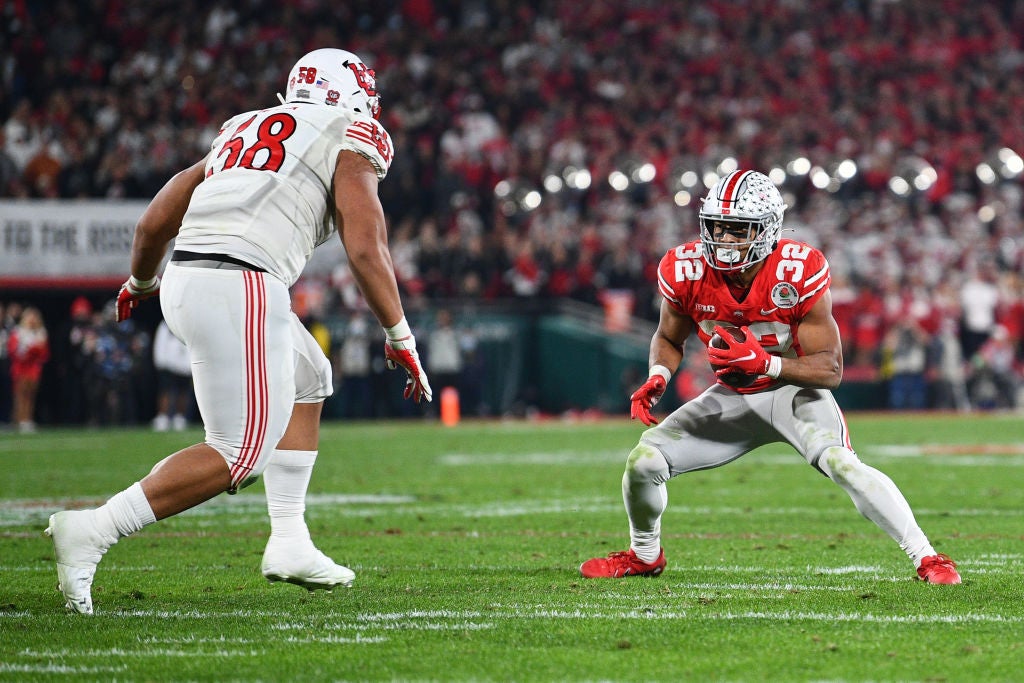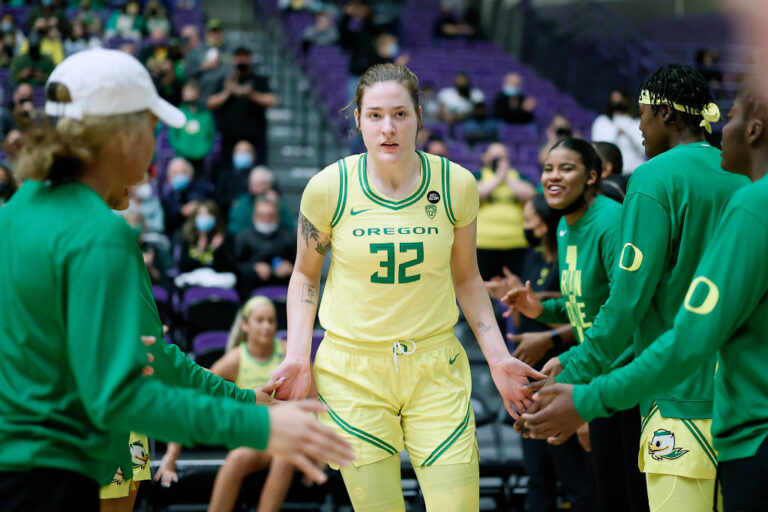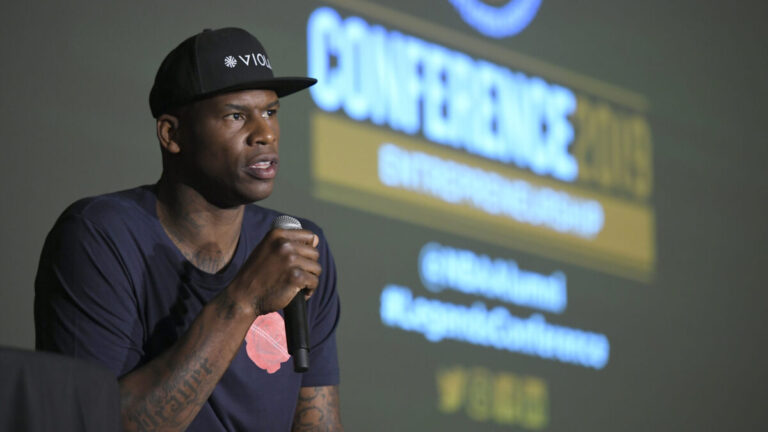We Don’t Have to Get Rid of College Football to Make It Brain-Safe(r)
Why this matters
The NCAA does not have a uniform policy for member schools' football programs regarding brain trauma and concussions. But there are easy, manageable steps that could be taken in college football to make the game safer for athletes' brains.
More than 22 million viewers made this year’s College Football Playoff championship game the most-viewed event on cable television in several years. But away from the bright lights, the dark cloud that has been hanging over the sport for a decade is growing. More and more former and even current college football players are being diagnosed with chronic traumatic encephalopathy (CTE), the degenerative brain disease caused by repeated head impacts (RHI) including concussions. As of 2018, CTE had been diagnosed in former players from 147 schools.
Yet despite these alarming numbers, common sense health and safety reforms that could better protect the next generation of boys and young men remain unrealized.
As a former Harvard University football player myself – and someone who, as the CEO of the Concussion Legacy Foundation, has spent much of my adult life working to improve our knowledge of brain injuries and reduce risk to athletes and others – I find this frustrating. Because the truth is that college football is dramatically more dangerous for the brain than it needs to be. Compared to its closest cousins, the National Football League and high school football, it’s the Wild West. You’re lucky if you leave college football healthy. And if you don’t, you are on your own.
We can change this. The sport can recognize and understand the full spectrum of brain injury risk and take concrete steps to lower it. Here’s how:
The Spectrum of Risk
Brain trauma in college football can lead to two distinct problems: immediate traumatic brain injury (TBI) and long-term degenerative brain disease.
TBI is associated with symptoms that people familiar with the term “concussion” have come to recognize: headache, light sensitivity, or attention/concentration issues. It occurs when any impact – with the ground, another player, or even with a whiplashing of the neck and no impact – alters brain function. This leads to metabolic and chemical changes, the severity and duration of which often play central roles in determining the length of the athlete’s recovery.
By four weeks after a concussion, most athletes no longer have symptoms. While the vast majority of TBIs in college football are concussions, moderate and severe TBIs – which include brain bleeds and severe brain damage – also occur. Frostburg State University football player Derek Sheely died in 2011 after suffering a brain injury in practice that wasn’t properly managed. His family later alleged that rather than provide medical care to Sheely, a coach berated him and pressured him to continue practicing until another head impact killed him, possibly as a result of second-impact syndrome. The NCAA eventually settled a lawsuit for $1.2 million.
Long-term disease deriving from football-related brain trauma comes in various forms. Some athletes develop post or persistent concussion syndrome, which is defined by symptoms lasting longer than normal, usually three months or more. Some patients will develop novel psychiatric disorders, including depression, anxiety, and suicidal ideation. The latest study of suicide among NCAA athletes found that football players were 2.2 times more likely to die by suicide while in college than other athletes.
Over the long term, a single concussion has been associated with double the risk of dementia and a 56 percent increased risk of Parkinson’s disease.
Repetitive brain trauma, often referred to in scientific literature as repetitive head impacts (RHI), is a newer area of research. RHI is defined as impacts to the head that cause concussions as well as the impacts that don’t cause any symptoms. RHI is associated with multiple neurodegenerative diseases, including chronic traumatic encephalopathy (CTE), Lewy body disease, and amyotrophic lateral sclerosis (ALS).
A study of 266 deceased football players suggests the odds of developing CTE increase by as much as 30 percent per year played. That same study found that 67 of the first 81 college football players studied (83 percent) had the disease. While brain banks are not always representative samples of the population, families were shockingly good at diagnosing CTE in loved ones. And CTE is not seen in people who have not been exposed to RHI.
A study from the Boston University CTE Center found that contact sport athletes with more than eight years of play were six times more likely to develop Lewy body disease (LBD), which can cause dementia and Parkinson’s-like movement disorders, than those who didn’t play contact sports. RHI is also suspected as the cause of both NFL players and Scottish professional soccer players being four times more likely to be diagnosed with ALS.
Acknowledging the Truth
In the past eight years, the NFL, the Centers for Disease Control and Prevention, and leadership of the National Institute for Neurological Disorders and Stroke and the U.S. military have all gone on record saying the evidence supports a causal link between head impacts and CTE.
By contrast, the NCAA – along with the National Hockey League – still refuses to acknowledge the link. It is fair to wonder if the national governing body of college sports publicly acknowledging the link would help accelerate efforts to prevent CTE and thus save lives.
A 2015 article in the NCAA’s Champion Magazine downplayed the risks of CTE, using an editorial voice to refer to the evidence connecting concussions and RHI to bad outcomes as a “handful of anecdotes” creating “unfounded panic about long-term consequences.” (Interestingly, the article was removed from the Internet after we cited it in an invited JAMA Neurology editorial Who Will Protect the Brains of College Football Players?) Today, the NCAA promotes a 2019 interview with its chief medical officer, Dr. Brian Hainline, in which he says, “(W)e don’t know what causes CTE.”
In fact, we do. There may be some debate as to how CTE translates into symptoms, but there is no real debate that the only known cause is RHI.
Steps We Can Take
We don’t have to end football and other contact sports to meaningfully reduce the risk of brain injury and disease. By taking the following steps, we likely can reduce all injuries substantially – without negatively impacting the on-field product:
1. Reduce hitting in practice.
The NCAA’s own research reveals that 72 percent of football concussions and 67 percent of total head impact exposures come in practice. The math on this is simple: Less exposure means less risk of injury and disease.
Other levels of football are showing that this can work. The NFL allows a maximum of 14 full-contact practices during its 17-week regular season – and those practices account for only 18 percent of the league’s documented concussions. In 2014, the Michigan High School Athletic Association instituted contact practice limits that resulted in one high school football team suffering 53 percent fewer head impacts in practice. A 2019 rule change reduced contact in Michigan from 90 minutes allowed per week to 30 minutes. New Jersey is now down to 15 minutes of contact per week.
But colleges simply have not done enough, and coaches bear much of the responsibility for that. By widely ignoring practice changes at the NFL level, they have been remarkably persistent in finding ways to expose their players to head impacts. Case in point? In 2017, the NCAA banned two-a-day football practices during the preseason with the goal of reducing RHI exposure for football players. When the effect of rule change was formally studied, it turned out it had the reverse effect: Coaches crammed 26 percent more head impacts into one practice than they had in prior years in two practices. In addition to rebelling against the spirit of the rule change, they found a way to make practices more dangerous!
Some college coaches have been outspoken about their lack of concern about CTE. Larry Fedora, the head football coach at the University of North Carolina, said in 2018 that “I don’t think it’s been proven that the game of football causes CTE. We don’t really know that. Are there chances for concussions? Of course. There are collisions. But the game is safer than it’s ever been.”
On the other end of the spectrum, Dartmouth University head coach Buddy Teevens has received positive national media attention for his commitment to ensuring that his players “will never tackle a teammate.” Despite banning live tackling in practice, Dartmouth has won the Ivy League and gone 9-1 in each of the past two seasons, and the defense gave up the fewest points in the league in 2021. Sadly, no major college coach is trying to replicate Teevens’ coaching methods. And while Ivy League coaches in 2016 voted unanimously to eliminate full-contact practices during the season, no other conference has followed suit.
2. Ditch the kickoff.
During the 2015 Ivy League season, kickoffs accounted for 6 percent of all plays – and 21 percent of all concussions. The league received permission to move the kickoff up from the 35-yard line to the 40 to allow more kicks to reach the end zone and also moved the touchback from the 20-yard line up to the 25 to encourage more touchbacks. The number of returned kicks decreased from 82 percent to 50 percent, and concussions on kickoffs dropped 69 percent.
Kickoffs are so dangerous that both the NFL and college football programs are trying to reduce them. But why not eliminate them? In high school, we called the kickoff team “the suicide squad.” Even as gung-ho teenagers, we knew you had to be suicidal to want to run 40 yards at full speed in order to collide with another human. At every level of the sport, the kickoff and kickoff return teams are mostly backups, simply because they are players teams can most afford to lose to injuries. Let’s stop the madness. Put the ball on the 25-yard line to start possessions. Some high schools already are getting rid of the kickoff – and they don’t miss it.
3. Ditch the three-point stance.
When I played offensive and defensive lines, I always started in a three-point stance: along with both feet, I had one hand touching the ground. As a result, my head was always in a vulnerable position no matter which direction I moved – and when I moved forward, which was common, it was difficult for my head to not be the first point of contact with opposing players.
For years, lineman and researchers alike have postulated that having every lineman start in a two-point stance, with no hand on the ground, would discourage using the head as the lead point of contact and allow lineman to be in a more balanced position to initiate contact with their hands. While this reform is only beginning to be studied, a 2020 study exploring RHI frequency and severity between players in two- and three-point stances showed encouraging results, concluding that “offensive line players in a down stance had a higher likelihood of sustaining a head acceleration event than players in an up stance regardless of the type of play (run vs. pass).”
This reform will likely face heavy resistance both from coaches, who may not know how to teach it and could lose their jobs if their players underperform, as well as from some players, specifically those who cannot compete as well on two feet.
4. Encourage more targeting penalties.
In 2008, the NCAA adopted a targeting rule to discourage specific dangerous contact. In 2019, targeting was defined as when a player initiates contact with the head or neck and “takes aim at an opponent for purposes of attacking with forcible contact that goes beyond making a legal tackle or legal block or playing the ball.” Players are automatically ejected when called for this type of foul.
Nothing seems to elicit more discussion and anger on social media than the subjective nature of targeting calls, but new research suggests we should lean in on this rule change. The first study to look at the injury risks associated with impacts in which a targeting penalty was called was published in 2022, and it reveals both the effectiveness and the limits of the rule. Examining 538 Pac-12 Conference games from 2016 to 2019, researchers found that there were 213 concussions during the study period, including 15 that occurred on plays in which targeting was called. A total of 141 targeting penalties were called, meaning a concussion was diagnosed every nine targeting calls.
When I was growing up and playing football, helmet-to-helmet impacts were often celebrated. Targeting penalties appear to be a good deterrent. That said, only 7 percent of college football concussions occur on plays that are flagged for targeting, so this is only a small piece of the puzzle.
Why Little Is Changing
As CTE and concussions became part of the cultural conversation starting in 2007, the NCAA followed the NFL in creating modest changes to the game that were focused on reducing concussions. But the association never created enforceable, hard-and-fast rules for concussion protocols, instead publishing best practices for member schools and hoping they were implemented – a strategy that has produced mixed results.
It’s not entirely clear why the NCAA doesn’t regulate concussion protocols or concussion education the way it regulates, say, amateurism. In the past, college sports leadership has questioned how enforceable an NCAA policy would be and whether local laws would interfere with an NCAA rule. Changing the NCAA protocols would require a vote from the association’s member schools. Perhaps they don’t want oversight on concussion protocols, policies, or education.
Perhaps the NCAA doesn’t want accountability, either. The association has evolved significantly since 1906, when it was “founded to protect young people from the dangerous and exploitative athletic practices of the time,” including a rash of serious and fatal head injuries in football. In 2013, while defending the Derek Sheely lawsuit, NCAA lawyers wrote that the association “denies that it has a legal duty to protect student-athletes.”
The NCAA does issue a general fact sheet for both players and coaches on concussion, last updated in 2020. It identifies signs and symptoms of concussion and identifies short and long-term risks, including sudden death and degenerative brain disease.
But coaches don’t always see that fact sheet. A survey of more than 1,800 college coaches published in 2016 found that one-third did not receive any concussion education from their institution, and only 47 percent of those receiving education received had a formal meeting and received written materials, which are far more effective than emails (35 percent), videos (23 percent), and informal conversations (29 percent). On questions testing concussion knowledge, male contact sport coaches – a group that includes football coaches – “less frequently endorsed safe or correct responses.”
Related: From ‘Punch Drunk’ to CTE: How the Sports World Learned to Ignore Brain Trauma
Lack of buy-in from coaches may explain another concerning finding. In a 2014 study, 734 football players were asked this question: “If I report what I suspect might be a concussion, my coach would think I made the right decision.” On a 1 to 7 scale, with 4 being neutral, freshmen were the most likely to agree with that statement (5.30), followed by sophomores, juniors, and finally seniors (4.86). The difference by years of play was statistically significant, suggesting that football players learned over time that their coaches did not want them reporting concussions.
That finding helps explain why so few concussions are diagnosed. A survey by the same research team revealed that perhaps only 4 percent of concussions in college football are diagnosed. Players admitted that for every concussion they had diagnosed, they didn’t report six other experiences that they believed were concussions. Even more concerning, players were separately asked how many times they were “dinged” or “got their bell rung.” For every concussion diagnosed, they reported 21 dings. They didn’t even know that a ding is a concussion! Combining the two categories, the survey suggests that only one of every 28 concussions is diagnosed.
The situation is even worse when it comes to CTE. The NCAA doesn’t issue a CTE fact sheet like it does a concussion fact sheet. Instead, the concussion fact sheet for both players and coaches includes a single sentence providing substantive information on the long-term consequences of RHI.
On page two, the fact sheet asks, “What do I need to know about repetitive head impacts?” It answers: “Research is ongoing, but emerging data suggest that repetitive head impact also may be harmful and place a student-athlete at an increased risk of neurological complications later in life.” (Emphasis added.) This is vague enough to be meaningless, but – I suspect – just specific enough to be passed off as informed consent in future litigation brought by injured athletes.
The NFL practice reforms of the past decade were not initiated by the league, but instead by the NFL Players Association. Concerned about CTE, players made practice reform an essential element of the NFL’s 2011 Collective Bargaining Agreement. At the high school level, practice reforms have been driven by oversight from state athletic associations, state governments, and advocates and educators – all of whom ultimately are responsible for the health and safety of minors.
Meanwhile, college football is characterized by a dramatic power imbalance between coaches and players. These athletes, most of whom are adults, don’t have a union and can neither demand nor bargain for safer working conditions. They are at the mercy of their coaches, many of whom are the most powerful men on their campuses and the highest-paid public employees in their states. Those coaches may fear that changing how they practice could put them at a competitive disadvantage; in the high-stakes world of major college football, a single additional loss in a season can cost a coach his multimillion-dollar job.
In other words, when coaches consider changing how they practice, they have to weigh the long-term risk of CTE to their players against the short-term risk to their personal livelihoods. No wonder college teams continue to hit so much in practice. Most of the coaches will be retired or dead by the time their players are diagnosed with CTE.
How to Create Change
Because of the reasons above, I personally do not believe that we will see college football adopt major brain safety changes anytime soon. Here are some things that could create change:
1. College football players could wise up and negotiate changes collectively through an organization like the College Football Players Association.
Considering the lengths Northwestern University football coach Pat Fitzgerald went to in 2014 to prevent his team from voting to unionize, that will be an uphill battle.
2. Individual universities could become liable for medical care and pain and suffering when former players develop chronic symptoms from brain injury or CTE.
State universities are generally protected by sovereign immunity, but there could be momentum behind lawsuits against private schools to change the legal precedent.
3. Coaches, recognizing how many of their players and even their fellow coaches have developed CTE, could lead the way for reforms from within the sport.
My experiences with college coaches thus far suggests that the last item is unlikely. After my editorial “Who Will Protect the Brains of College Football Players?” was published, I shared it with a Power Five assistant coach who had been supportive of safety efforts. He was disgusted by the data, and he told me he was going to call around to all the head coaches with whom he was close to share it. His goal was to find a Power Five head coach – just one – who would volunteer to take a leadership role on practice reform and speak out publicly on this issue.
After a few days, I texted him and asked if he had any luck. The answer I got back was “Zero!"
Monthly Issue
College Sports 2.0
Last summer, NCAA president Mark Emmert openly acknowledged it was “the right time” to answer the question “if we were going to build college sports again, and in 2020 instead of 1920, what would that look like?”
From education to athlete safety, labor laws to race and gender equity and beyond, this issue offers guidance for what that next iteration of American college sport ought to look like.





